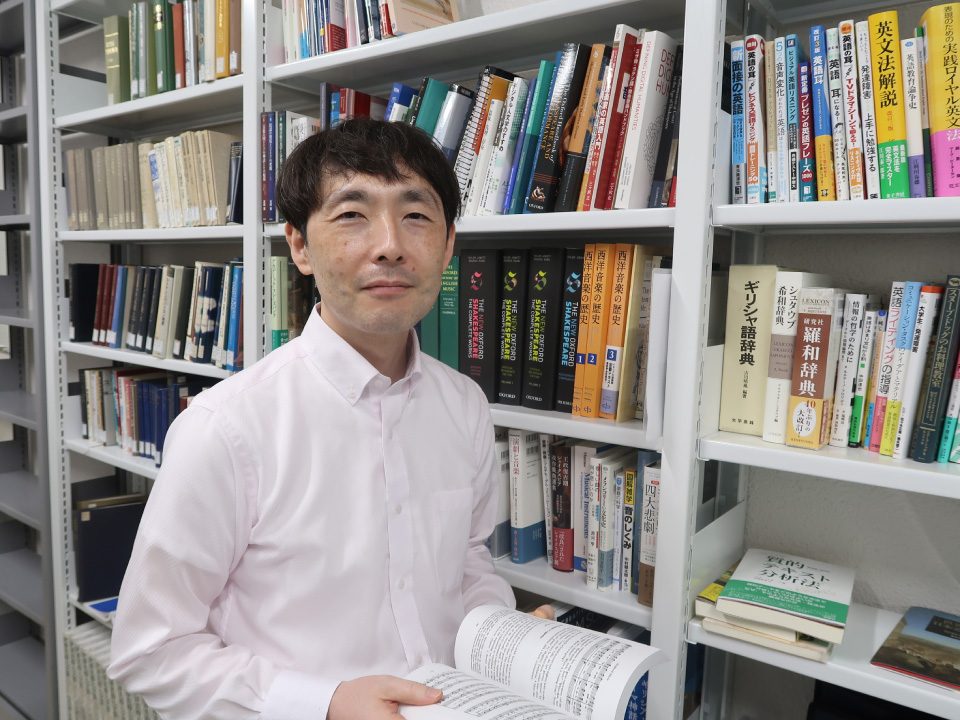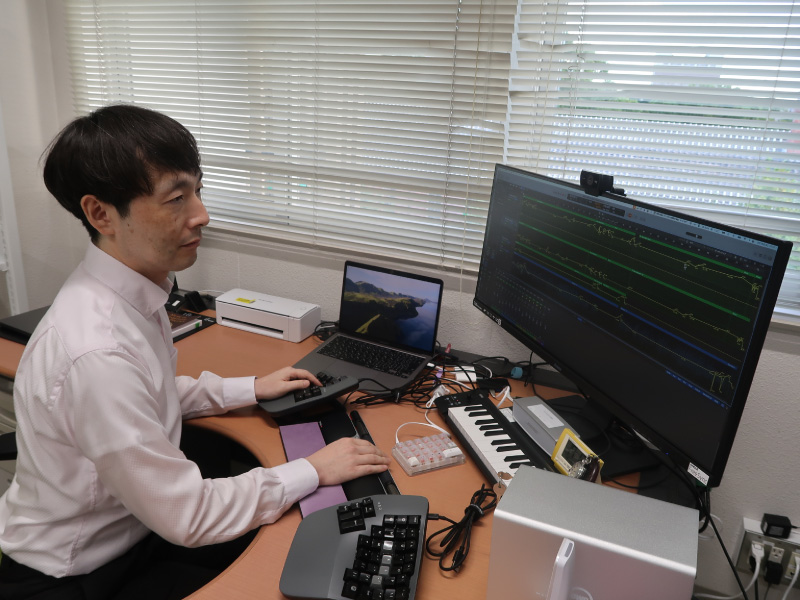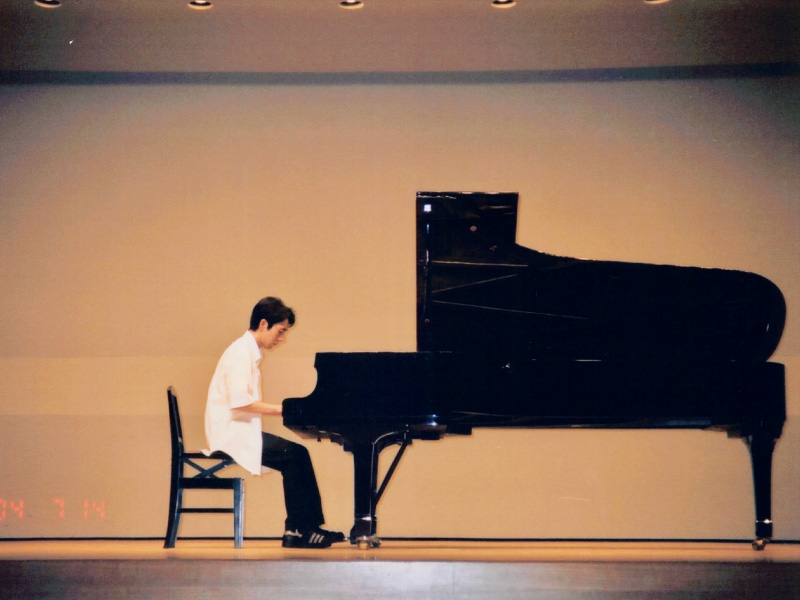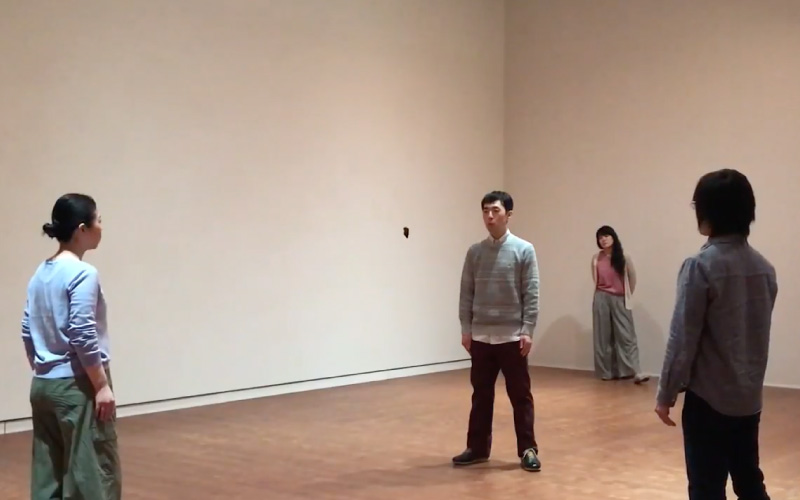How has music been used in storytelling? The history of British drama gives us a clue.


Dr. Noritaka Tomimura, Associate Professor
Multicultural Studies, Department of Literature, Faculty of Letters
Associate Professor Noritaka Tomimura is researching the functions of music and body language in medieval and early modern plays in Britain. In this article, we asked him mainly about music. Music is now an integral part of any story, including films and dramas. However, its role actually varies greatly depending on the era.
What playwrights expect from music changes with the times.
What kind of research are you doing?
Nowadays, stories are expressed in various forms, including plays, film, drama, anime and video games. In works of these genres, it is almost always the case that music is used. For example, it is common for tense scenes to be accompanied by music that creates a sense of tension, sad scenes to be accompanied by sad music, and heroic scenes to be accompanied by heroic music. Furthermore, this music is played as background music that the characters cannot hear. There are also many famous pieces of film music like this. So, when did this kind of music start being used? And, what kind of music has been wanted? To find the answers to these questions, I am researching the history of plays.
I chose to focus on British drama because its influence is still strongly felt in today’s culture. I am researching how music was connected to plays in the soil that gave birth to great playwrights, including Shakespeare, who wrote plays that are still performed and made into films all over the world today. I am also researching how this has changed over time. I think that this research will help us to understand some aspects of what playwrights were expecting from music at that time.
How do you study these old-time dramas?
Basically, we gather information from the texts (written words) that remain. In plays from Shakespeare’s time, there is guidance on what kind of music to play and when, as well as the scenes and lyrics the characters sing. Even in plays from the Middle Ages and Tudor era, there are instructions like “blow the trumpet at this point.” In religious plays, there are scenes where passages from hymn are thought to have been sung, while conversely, there are also instructions to sing very vulgar songs. Such information can be valuable clues.
By analyzing them and looking at the context in which the music was used and in what situations, we can understand the role that the music was expected to play. We collect and categorize this kind of information and analyze the characteristics of each period and artists.
What have your studies revealed?
In Europe, music has been an essential element of drama since ancient Greek dramas in the BC era. A chorus sang parts of the dialogue. After that, there is a lot that is unknown due to the lack of documents from the Middle Ages, but in England, it is known that theatrical elements were included in Christian liturgy around the 10th century.
In the Middle Ages, religious and secular plays were performed outside of churches, but unlike ancient Greek drama, the spoken lines were not often expressed through song. The distinction between spoken lines and music was quite clear. On the other hand, there were times when the audience was encouraged to sing along with the performers, and music was used as a means of uniting performers and audience.
During the Elizabethan era, music became more closely linked to the storyline, especially in Shakespeare’s work. For example, in Shakespeare’s “A Midsummer Night’s Dream,” when Nick Bottom, a man whose head has been transformed into that of a donkey by the tricks of Puck, a fairy, sings a song in the forest, and the sleeping fairy queen, Titania, awakens and immediately falls in love with him under the effect of a love potion. In addition to this, there are other scenes in which music serves as a catalyst for plot development.

Associate Professor Tomimura also composes and arranges music.
Music still plays an important role in movies and animations today.
Yes, but the technique of using music alongside the story to amplify emotions and atmosphere, which is common in modern films and animation, is not universal. As I mentioned, such usage was not common even in the plays in the Middle Ages and the Elizabethan era, which I study. However, for those of us alive today, it seems normal for music to be used in plays, movies and dramas to enhance the emotion and atmosphere of a scene, doesn’t it?
I believe the important thig is not to take this as something inherently normal, but to recognize that the music used in a story brings our interpretation of the story, the characters’ lines, their movements, etc. in a certain direction. If music were not used in a film or drama, we would rely on our imagination to interpret it in various ways. Yet music has the power to cut through all of that and guide our emotions, saying, “This is how we should feel about this scene.”
Nowadays, music is not only added to the fiction stories, but also to real-life stories such as news reports and documentaries on TV, influencing how we interpret the content. We must consider whether we are unconsciously following the creator’s intentions through music. In particular, we should be aware of the impact of music has on shaping group consciousness. This is crucial from the perspective of media literacy as well.
Also interested in the human mind. Went to medical school to study from a medical perspective.
Why did you start this research?
I started playing music when I was a child. I remember singing and rearranging the melodies and lyrics of cartoon songs. Later, I got my hands on an 8-bit computer and began programming by reading manuals and magazines. I recreated game and anime music by typing (reproducing) and even compose original songs.
Looking back, since my student days, I’ve had an interest in three areas: the human mind, literature, and music. But I couldn’t find a profession that would bring all of these together. I was considering becoming an English teacher as one of the professions because I had some excellent teachers in school, but I also wanted to explore the human mind. There are various ways to approach the study of the mind, but if we consider humans as material, with the brain being the substance that makes us think and communicate, then we can say that the mind also has a material aspect. In fact, substances like drugs are used to treat mental illness, supporting the idea that the mind has a physical basis. With this in mind, I decided to study the human mind from a medical perspective, so I entered the School of Health Sciences and Nursing (now the School of Integrated Health Sciences), Faculty of Medicine at the University of Tokyo. Even in the Faculty of Medicine, I was able to enter this School of Health Sciences and Nursing from the Human Sciences III that I entered. In parallel, I also took classes towards earning my English teacher’s license at the Faculty of Letters and other faculties.
After returning to Kumamoto, my hometown, and completing a doctoral course at Kumamoto University, I worked as an English teacher at a technical college. People point out that my background in medicine and my work at an engineering technical college seems very different from my current field of study. However, since I have been into programming since childhood, I don’t think these fields are as far apart as they might seem (laughs).
At the technical college, I focused on English language education, emphasizing research and voice. During my time there, the TOEIC scores of the classes I taught increased by about 150 points, and I’ve been able to apply this experience to my classes at the University. I also realized how useful the mental health studies and statistics I learned in university were for both my teaching and research.
One of key reasons I chose my current research theme was the writings of the poet W. H. Auden. While trying to figure out how to connect my interests to my work, I happened to pick up a book at the university in which Auden wrote about Shakespeare and music. Though the content contained some inaccuracies, it sparked my curiosity about whether such a research topic was viable, and I began to explore the references further.

Associate Professor Tomimura as a student
I heard that you’re involved in composition and performance activities yourself.
Since I was a student, I have been composing and arranging music, creating stage sound, and conducting brass bands. While I play several instruments, the clarinet is the one I have played the longest. In addition, I have participated in in collaborative performances of contemporary music works at venues like the National Museum of Art, Osaka, and I have co-authored a paper on improvisation with researchers in the field of music.

Performance “Lifespan” at the National Museum of Art, Osaka (2018)
In the future I hope to deepen my research by integrating it with digital and other fields.
What are your future plans?
I would like to apply the digital humanities methods that I use in my research on body language to my research on music.
Digital humanities have seen various research institutions, including the University of Oxford, make electronic texts of plays and related materials from British drama available. For example, in the play’s text, various types of information are assigned, such as who speaks a particular line, what part of speech a word is, and so on. By analyzing such vast amount of textual data, we can obtain clues as to the manner of expression and the characteristics of the subject matter. Similarly, in the field of music, research is being conducted on images of musical scores and audio data. This approach will not only expedite current research, but also pave the way for a data science approach.
In addition, the topic of the relationship between plays and music is relevant to a wide range of disciplines in both the humanities and sciences. From the perspective of audience reception, the way our brains process auditory information such as language and music, as well as visual information, like the actions of actors, cannot be separated. Moreover, when considering the acoustical conditions of the stage, it is also related to engineering and architecture. I would be thrilled if research on music and storytelling can be advanced by integrating knowledge from these diverse fields.
Related links:

